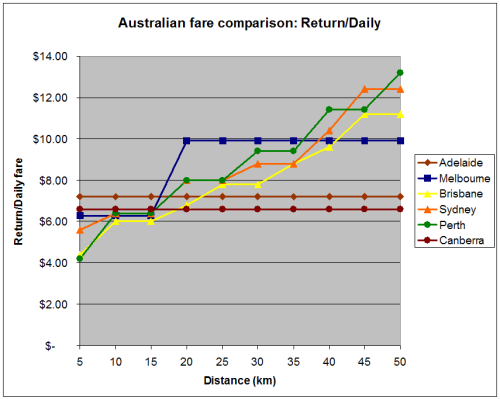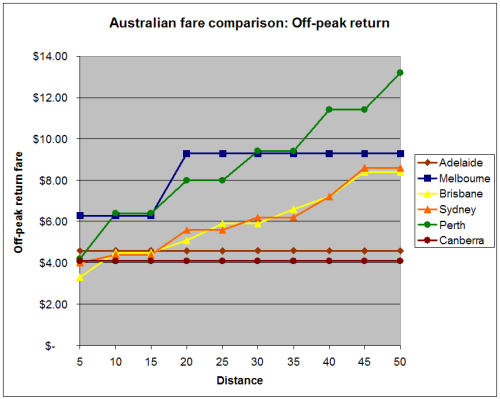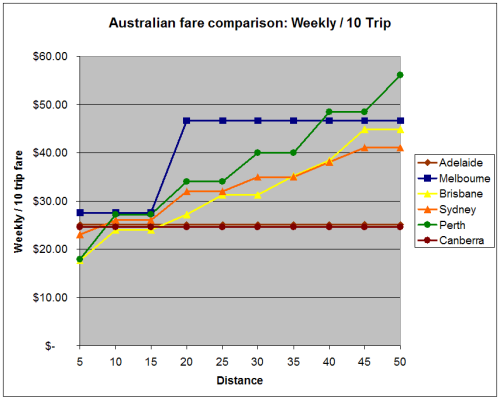We compared public transport fares from Melbourne, Sydney, Brisbane, Canberra, Adelaide and Perth. By looking at rail fares from various suburbs, we were able to compare the costs of travelling into each city’s CBD.
The figures (as at June 2007; which includes the Melbourne price-rise on 3rd of June) are shown in the graphs below.
They show that for public transport trips under 40km, Melbourne is the most expensive city in Australia, apart from some short trips which are more expensive under the flat-fare systems used in Canberra and Adelaide. Trips over 40km are comparatively cheap, helped by the removal of zone 3 in March 2007.




International comparison
We also took a look at fares for a handful of international cities: London, Singapore and New York. Because just converting the fares using the exchange rate doesn’t reflect the relative spending power of each currency, to show a fair comparison we have adjusted using The Economist’s “Big Mac” index, which is a well-known simple measure for showing what different currencies are worth.

Notes:
- Fares for Melbourne, Brisbane, Perth, Adelaide and Canberra are multimodal, with a single trip generally applying for two hours. Fares for Sydney and London are rail only: connecting bus, tram or ferry is additional. Fares for New York include a free bus transfer. Fares for Singapore include a discounted bus transfer.
- The weekly fares are for ten single trips, or a discounted weekly or 10 Trip ticket where available. (In Melbourne, the 10×2 hour price is the same as a 5xDaily or Weekly ticket.)
- Multimodal fares are a vital part of the Melbourne fare system, helping make public transport simple to understand and use. However for journeys to work, at present only about 15% of people use more than one mode. (Source: Census 2001, Working Population Profile, sheet W 18A)
- All fares are as at June 2007, and include the 3rd June Melbourne price rise.
- Other cities’ fares may increase marginally later this year; exact amounts have not yet been announced. These graphs will be updated when this occurs. Given a CPI increase, we expect Melbourne’s prices will still be the highest for most trips.
- The PTUA believes the zone 1 ticket price should be brought down to match zone 2; the zone 1+2 price should be no more than 50% higher than the single zone price; the overlap area should be expanded to make more trips within a single zone.
See also: Media release: Melbourne’s transport fares the highest – study

